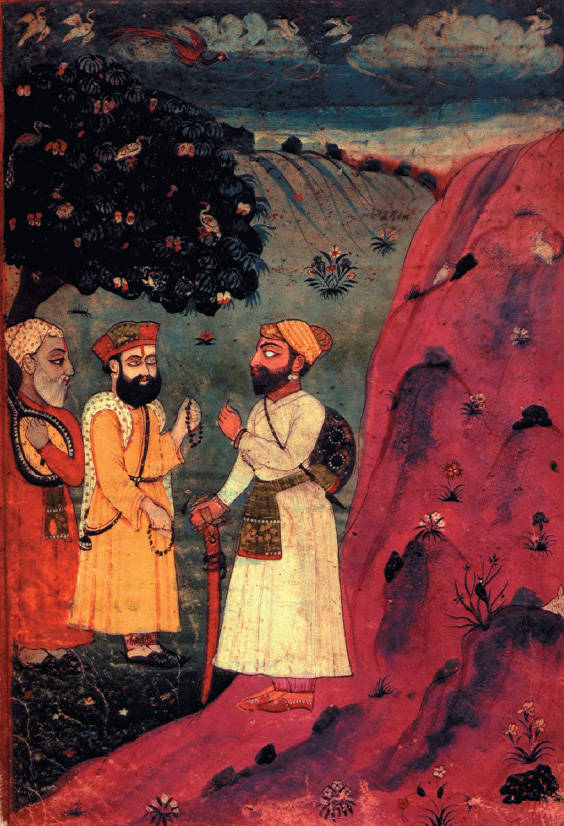India: Bridging the Hindu/Muslim Divide

In a largely Hindu India, ruled by the Muslim Mughal Empire, several significant cultural departures took shape in the early modern era that brought Hindus and Muslims together in new forms of religious expression. One was the flourishing of a devotional form of Hinduism known as bhakti. Through songs, prayers, dances, poetry, and rituals, devotees sought to achieve union with one or another of India’s many deities. Appealing especially to women, the bhakti movement provided an avenue for social criticism. Its practitioners often set aside caste distinctions and disregarded the detailed rituals of the Brahmin priests in favor of direct contact with the Divine. This emphasis had much in common with mystical Sufi forms of Islam and helped blur the distinction between these two traditions in India (see Document 15.4).
Among the most beloved of bhakti poets was Mirabai (1498–1547), a high-caste woman from northern India who abandoned her upper-class family and conventional Hindu practice. Upon her husband’s death, tradition asserts, she declined to burn herself on his funeral pyre (a practice known as sati). She further offended caste restrictions by taking as her guru (religious teacher) an old untouchable shoemaker. To visit him, she apparently tied her saris together and climbed down the castle walls at night. Then she would wash his aged feet and drink the water from these ablutions. Much of her poetry deals with her yearning for union with Krishna, a Hindu deity she regarded as her husband, lover, and lord.
What I paid was my social body, my town body, my family body, and all my inherited jewels. Mirabai says: The Dark One [Krishna] is my husband now.15
SUMMING UP SO FAR
Question
In what ways did religious changes in Asia and the Middle East parallel those in Europe, and in what ways were they different?
[Answer Question]
Yet another major cultural change that blended Islam and Hinduism emerged with the growth of Sikhism as a new and distinctive religious tradition in the Punjab region of northern India. Its founder, Guru Nanak (1469–1539), had been involved in the bhakti movement but came to believe that “there is no Hindu; there is no Muslim; only God.” His teachings and those of subsequent gurus also generally ignored caste distinctions and untouchability and ended the seclusion of women, while proclaiming the “brotherhood of all mankind” as well as the essential equality of men and women. Drawing converts from Punjabi peasants and merchants, both Muslim and Hindu, the Sikhs gradually became a separate religious community. They developed their own sacred book, known as the Guru Granth (teacher book); created a central place of worship and pilgrimage in the Golden Temple of Amritsar; and prescribed certain dress requirements for men, including keeping hair and beards uncut, wearing a turban, and carrying a short sword. During the seventeenth century, Sikhs encountered hostility from both the Mughal Empire and some of their Hindu neighbors. In response, Sikhism evolved from a peaceful religious movement, blending Hindu and Muslim elements, into a militant community whose military skills were highly valued by the British when they took over India in the late eighteenth century.